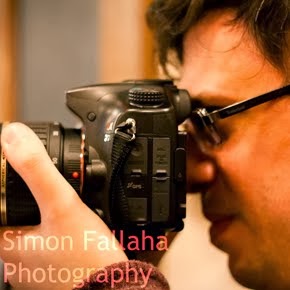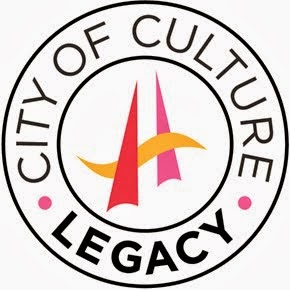The City Of Culture 2013 closes with Shaun Davey's Legenderry composition, which cooks up a storm both on and off the stage
"The occasion to repeat a concert not only brings a box of music back to life, it sometimes brings fresh opportunity... (It) also reunites performers and friends."
So speaks Belfast-born composer Shaun Davey, prior to the second major performance of his Relief Of Derry Symphony in 2013, the official closing concert of the City Of Culture year. And, with his composition and a cavalcade of staggering talent including, but not limited to, Dublin-born singer (and Mrs. Shaun Davey) Rita Connolly, percussionist Noel Eccles, pipist Liam O'Flynn, saxophonist Gerard McChrystal, the Ulster Orchestra and the internationally renowned Codetta choir, he has done just that.
The composer, the music, the ensemble, the audience and Derry-Londonderry's Venue 2013 really have provided a perfect example of how well one composition can lend itself to various interpretations in a short space of time. Mel Orriss's arrangement of The Relief Of Derry Symphony, performed in St. Columb's Cathedral in August, was an understatedly intimate delight; this ambitious and grand arrangement feels, and is, truly epic.
It unites the history of The Walled City, Stroke City, Derry, Londonderry or whatever you want to call it with the multitude of achievements in this momentous year to create a rich, lively and historical chronicle of sight and sound, the ideal watermark and perfect benchmark for the city, community and cultural landscape.
For the uninitiated, The Relief Of Derry Symphony was commissioned by Derry City Council in 1988 to mark the then forthcoming 300th anniversary of the Siege Of Derry in 1689. It was first performed by the Ulster Orchestra at the Guildhall in 1990, during an era of conflict.
This performance, as Davey indicates, is a reunion of the original conductor, Gearoid Grant, and the original soloists, including Pipe Major Iain MacDonald, his daughter Fiona, Noel Eccles, Liam O'Flynn and Rita Connolly. The difference here is that in the third movement, a special part has been written to incorporate the Codetta and Cantamus choirs, conducted by Donal Doherty, with a solo part for Gerard McChrystal in the fourth movement.
Bathed in jaw-dropping blue light, with a harp easily visible in the distance, the set-up on the Venue stage is instantaneously overwhelming at first sight. As expensive as the temporary tent-like structure has been, all rational thought drops to one side at the expense of clear sentiment; as David Tennant's Tenth Doctor might put it, you don't want it (the building) to go. But go it must, and the orchestra and choirs will see it goes down with a bang; providing the storm outside doesn't bring it down first.
Eight individual movements precede the symphony itself. And from the moment Liam O'Flynn's fingers touch the Uilleann Pipes in "Newfoundland", you are spellbound by the pitch, rhythm and variance of the arrangement. The strings and percussion of the Ulster Orchestra add extra depth to the sound without overwhelming O'Flynn himself.
There is a touch of sadness in "May We Never Have To Say Goodbye", where we hear Rita Connolly for the first time. Her clear, immersive vocals, representative of a wise, seasoned storyteller, movingly inspire the choirs behind her. Though the song itself is laden with melancholy overtones, it is ultimately triumphant, a reminder of everything achieved in Derry-Londonderry in 2013 and its sure legacy.
That's one of the best things about the first series of individual movements. Each movement is unique in its instrumental approach and in the story it tells, which, in turn, relates to a great City Of Culture memory. For example, the percussion and tone of "Arrival Of The Flag" recall the energy of Political Mother and the funk of CHIC, while "The Joys Of Mary", performed by Connolly, MacChrystal, the choirs and the orchestra, is very Fleadhesque, a Christmassy folk arrangement where the volume of the strings is toned down slightly to allow Connolly and the choirs to thrive. The concentration and emotion in Connolly's tones is even better defined in "Carol Of The Birds", which recalls the popular Christmas carol "I Saw Three Ships".
With O'Flynn, and later MacChrystal, at the forefront, "Arrival Of The Flame" and "Music For Fireworks" bring back the most magical moments of the Return Of Colmcille, with their Celtic, mystical overtones and prominent pipes. Like Mark-Anthony Turnage's At Sixes And Sevens, the piece looks backwards and forwards, inspiring memories and encouraging listeners to build on them. Vocals from Hothouse Flowers singer Liam O Maonlai on "Fill The Parting Glass" and Connolly's prayer for protection on "The Deer's Cry" round out the initial movements, by which point both the storm onstage and outside the Venue are causing the structure to literally rock. Fortunately fears of an Apollo-esque incident are unfounded, and the tent will stand strong and true throughout the main piece.
Contrasted alongside the endless variation of the first half of the concert, the first movement of the Relief Of Derry Symphony initially feels a tad underwhelming, but it remains impressive. The "Fanfare For The Common Man" inspired opening leads the way for a signified tale of triumph, doom and foreboding, in which Catholics rally to the cause of King James II and Protestants to William of Orange. The sound and march of the Colmcille Pipe Band, which symbolises the arrival of the beseiging army, is well attuned to the Venue's acoustics and "alleyway". This reaches an absolutely overwhelming crescendo in the second movement, where, following spotlighted drumming from Noel Eccles, the pipers surround the Ulster Orchestra like leaders in the battle, daring the orchestra - the opposition, you might argue - to raise their game. And raise it they do, marking an alternately triumphant and mournful tale of bombardment, defiance and the Battle For Windmill Hill.
Gloom envelops the third movement, O'Flynn's powerful pipes adding strong resonance to its reflective and funereal mood, recalling the lost lives in the Siege Of Derry. He later steps aside, leaving Connolly to return to centre stage with "The White Horse", a performance that offers hope through both vocal and visual projection - the image of a white horse on the underside of the Venue's roof throughout the song is proof of this.
The fourth and final movement, led by a momentous McChrystal, reflects on the dissolution of violent chaos into relief, culminating in a commanding coda of hope and peace. What follows is beyond words - "The Starlit Sky", a truly spectacular encore celebrating the "natural world" and "the beauty of life" with the prominence of Connolly's vocals, McChrystal's saxophone, the pipes and the choirs.
It is the ideal reminder that even as this cultural year dies out, and this building prepares to come down, Derry-Londonderry's cultural glow always has and always will hold strong no matter what storm.
















0 comments:
Post a Comment